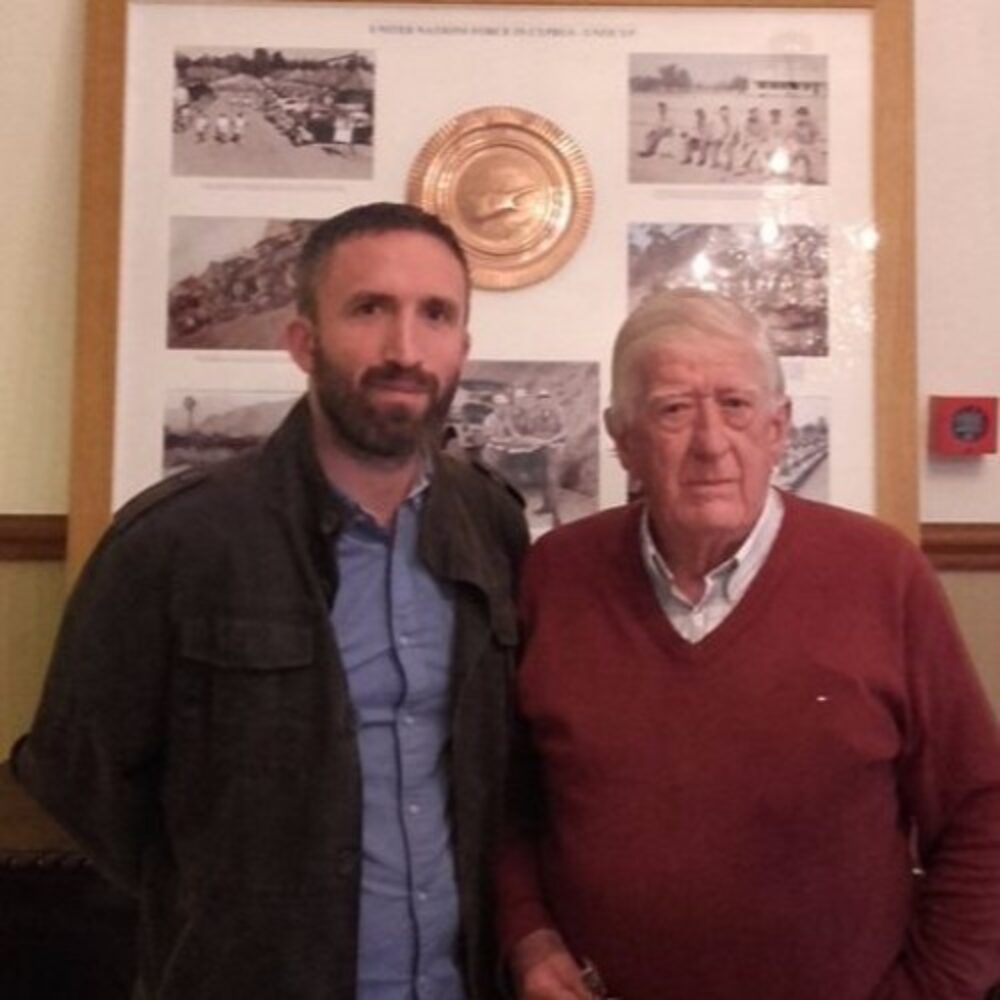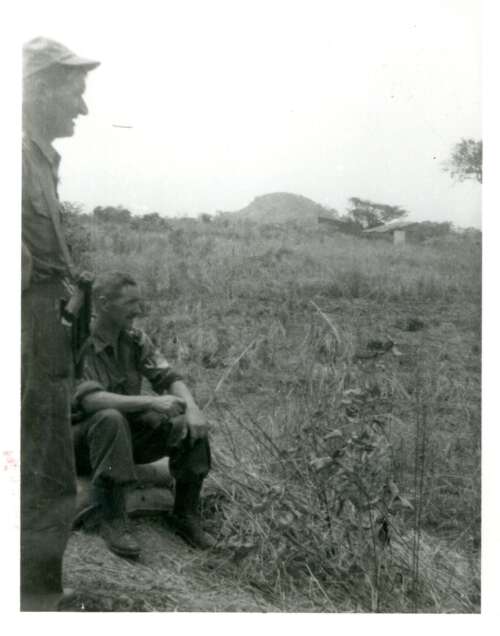17 September,1961
The day after the ceasefire was negotiated, on the morning of 17 September, Comdt Quinlan observed Gendarmerie once again surrounding 'A' Company’s position. The Fouga Jet was also flying. Comdt Quinlan continued negotiations throughout the day. At this stage the men of 'A' Company were utterly exhausted. Water had completely run out and food was minimal. Comdt Quinlan insisted on going into Jadotville town to see if he could get water restored and acquire a feel for the climate. He went into a bar where he was greeted with cheers by the Gendarmerie who saluted him and showed their wounds.
The situation worsened throughout the day. The UN jets that were promised never came and the relief force had returned to Elisabethville. Comdt Quinlan informed HQ 35th Infantry Battalion of the situation and advised that the ceasefire was on the verge of collapse. At this point, Minister for External affairs Frank Aiken TD had arrived at Leopoldville to meet with Dag Hammarskjöld. There seemed to be a serious lack of understanding between the 35th Infantry Battalion and 'A' Company about how perilous their situation now was. Comdt Quinlan’s focus was now on saving his men. With no reinforcements or water, and limited ammunition and food, 'A' Company were not in a position to sustain another attack.
During this time Interior Minister Godefroid Munongo had travelled from Elisabethville to Jadotville and requested a meeting with Comdt Quinlan. The two met at Munongo’s hotel. Comdt Quinlan was accompanied by Capt Liam Donnelly, Lt Fröberg and Fr Fagan, at the meeting, where Munongo called for 'A' Company’s immediate surrender. Comdt Quinlan was able to return to his position where he held a conference to discuss 'A' Company’s options. Strong arguments were made to continue fighting. However, taking into account that they now had five wounded soldiers, the lack of food, water and ammunition and the welfare of his troops, Comdt Quinlan returned and signed the terms of surrender. Comdt Quinlan felt that there was no other option. Munongo guaranteed 'A' Company’s safety.

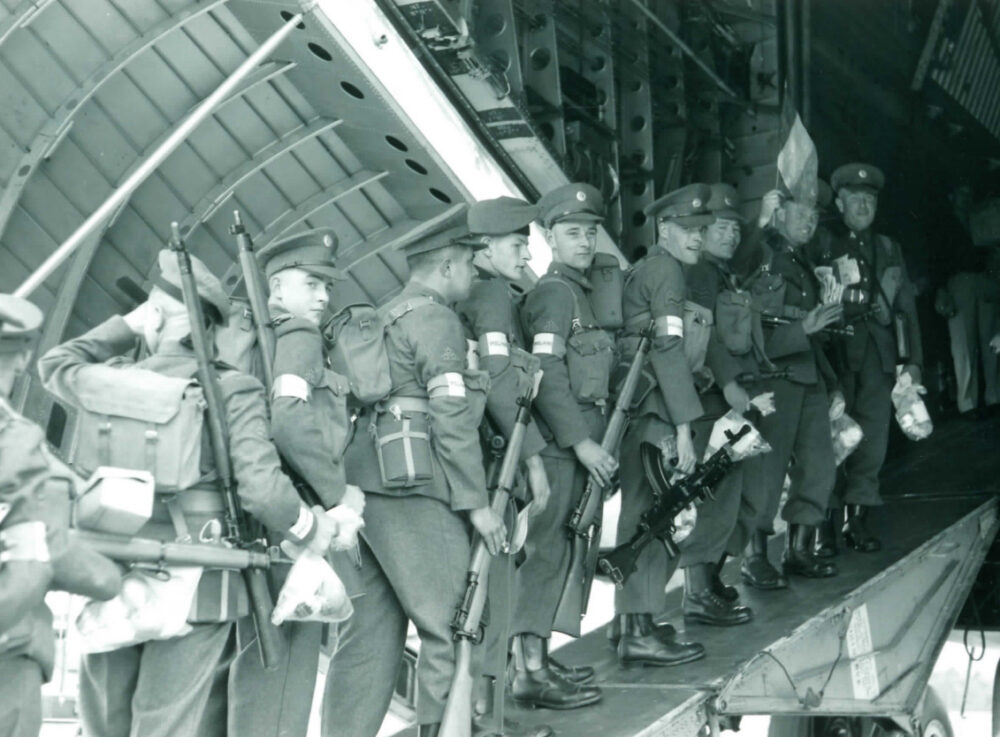




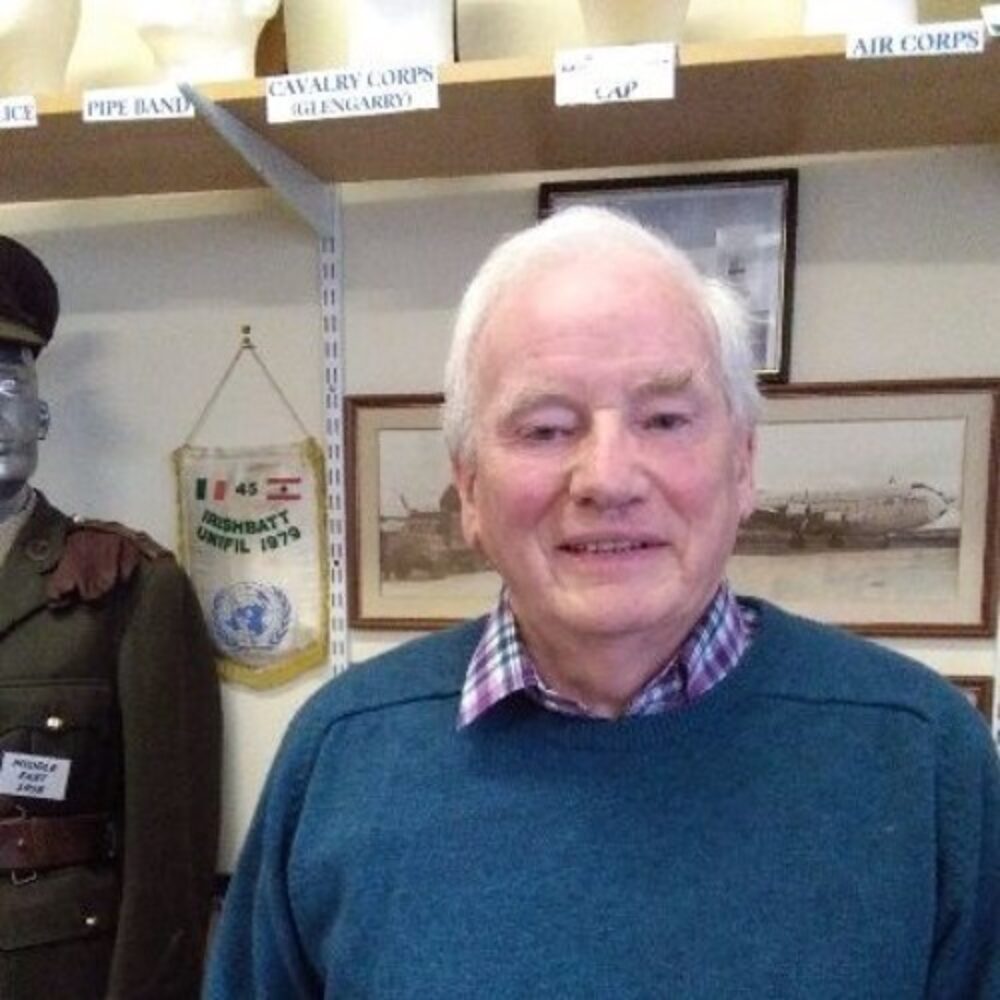


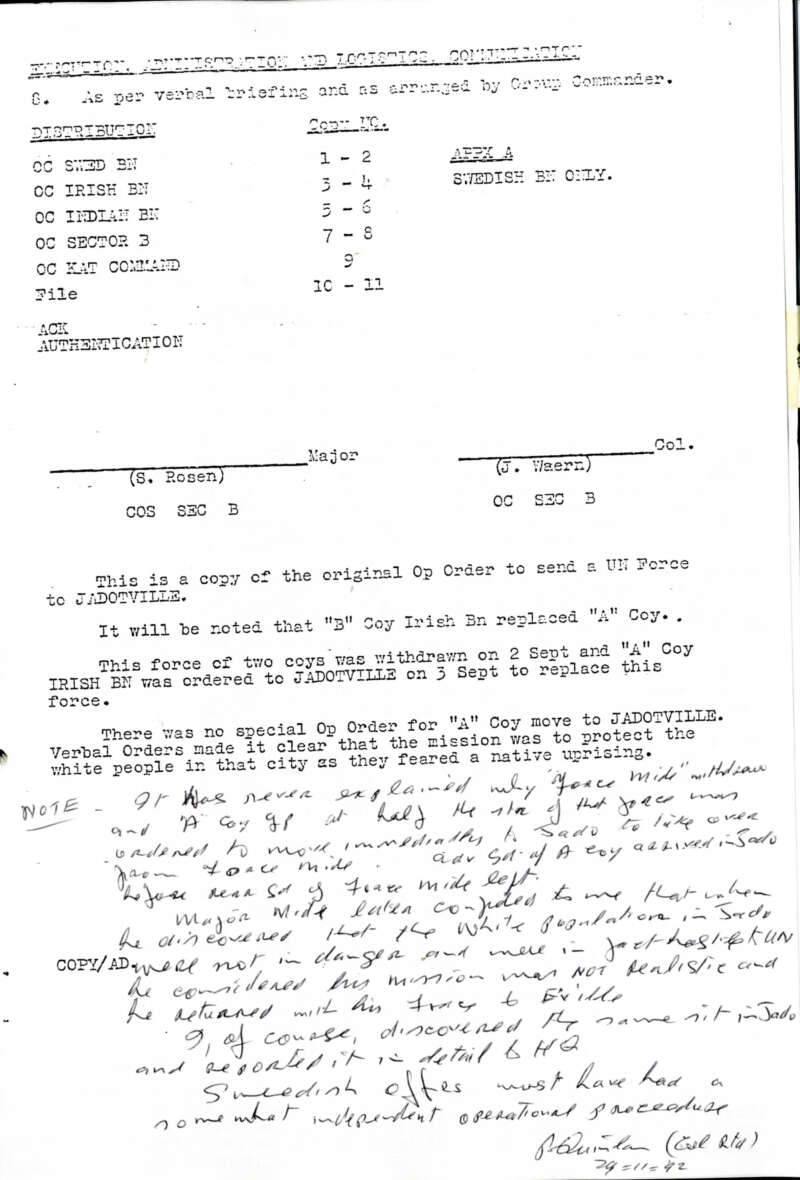
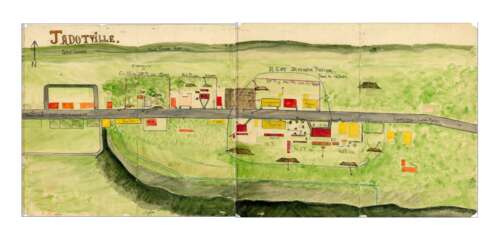


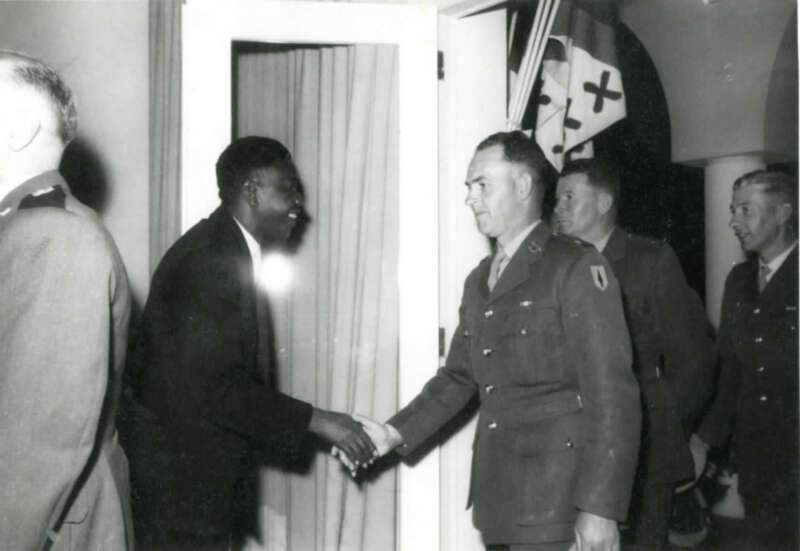
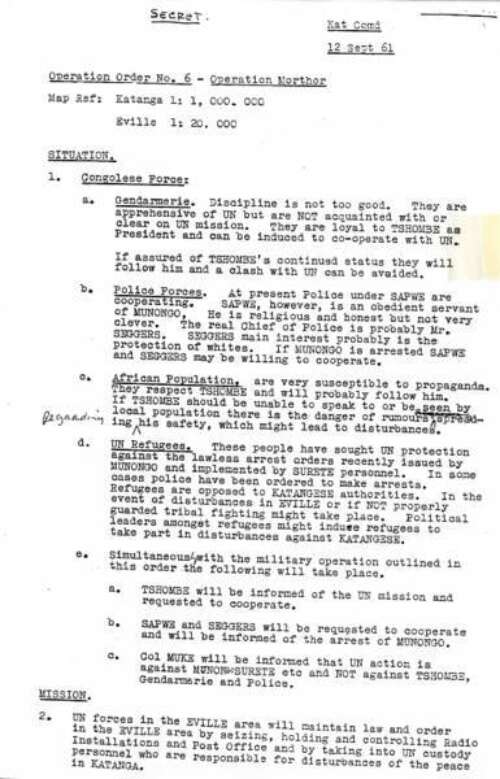




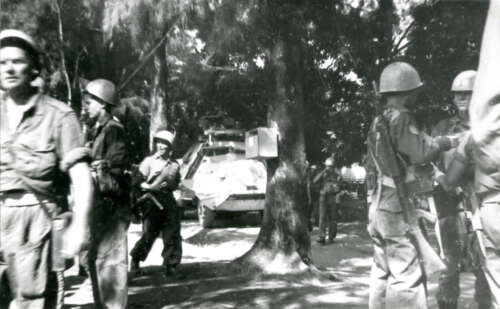


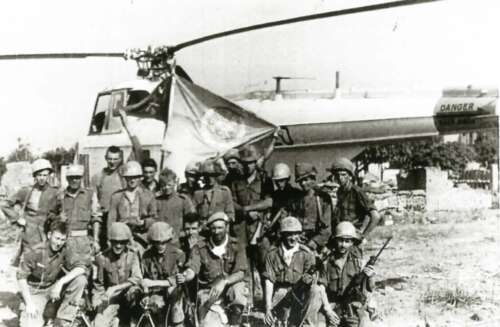

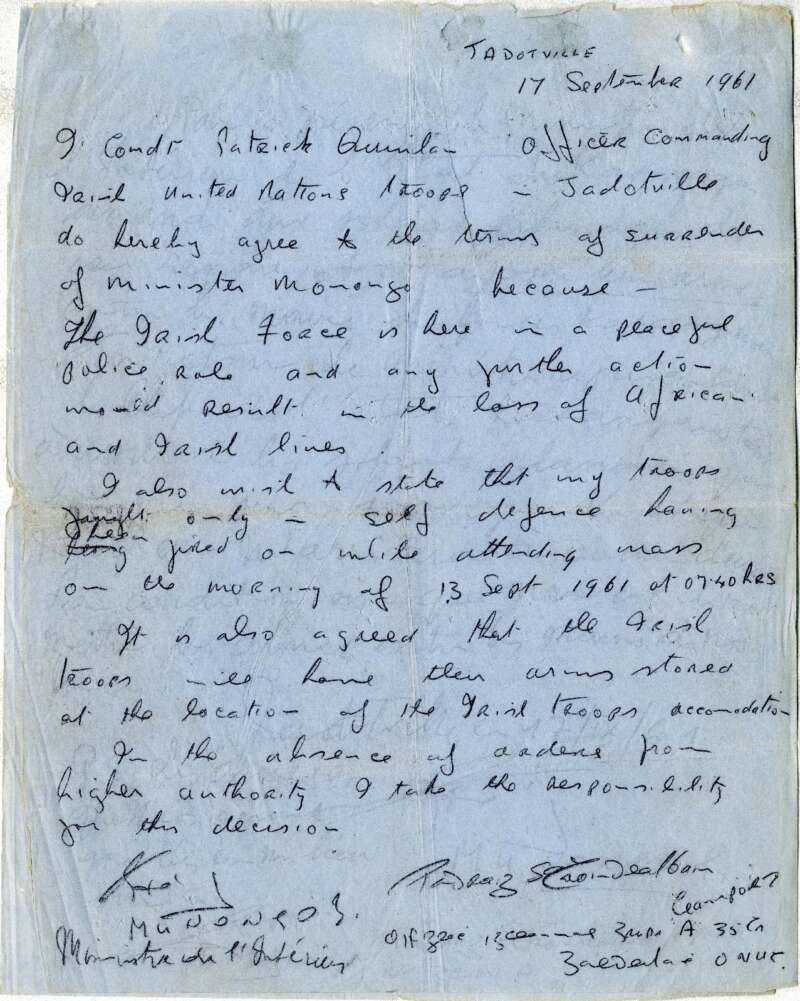
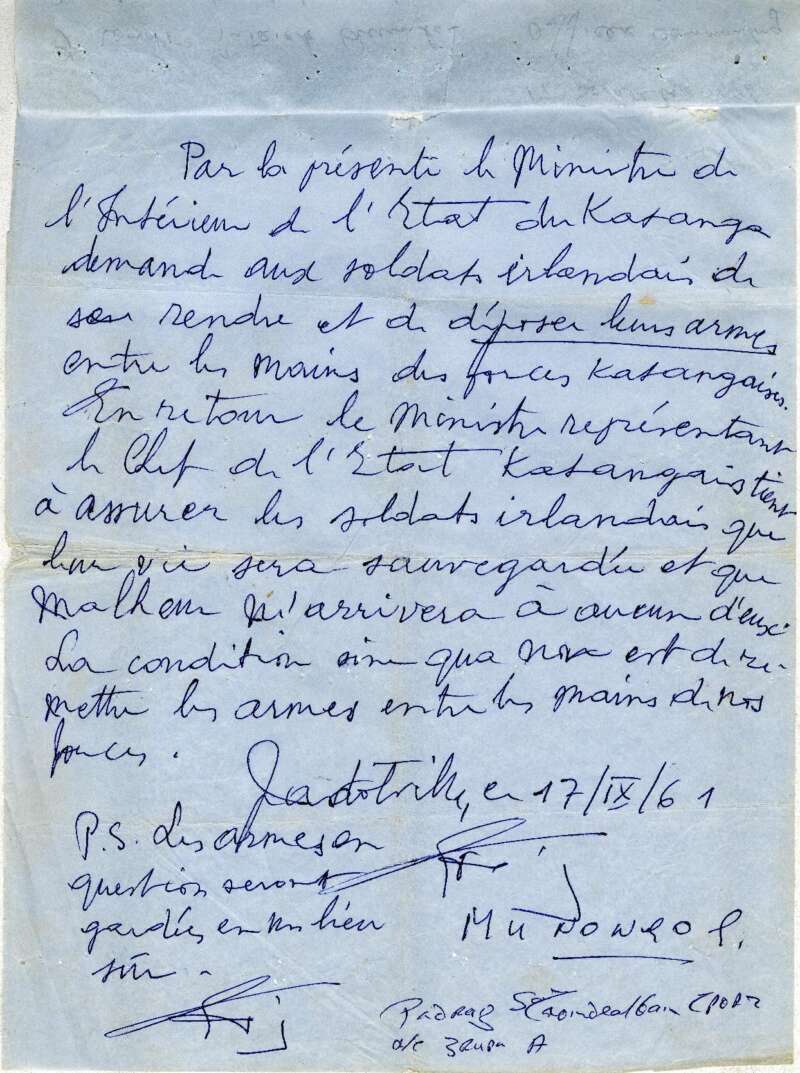
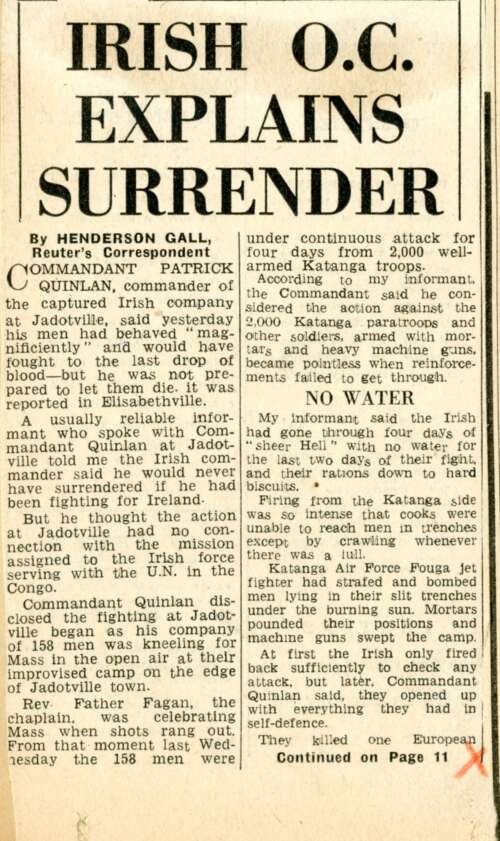
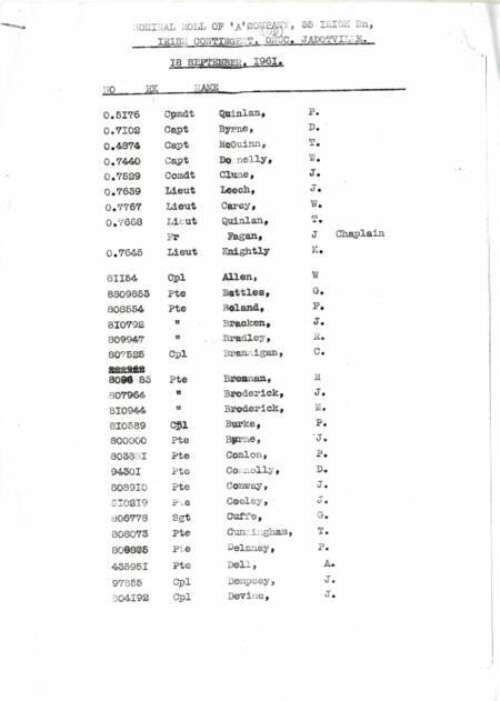



![Protocol of agreement between the Katanga authorities and UNOC [ONUC] pursuant on the ceasefire agreement](https://www.militaryarchives.ie/uploads/images/_width800/OIC-2019-003.jpg)

